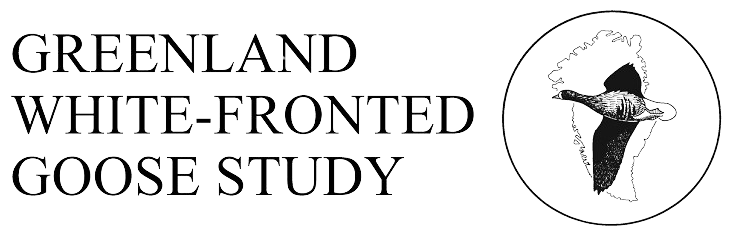History
Apparently not regular in Berry’s time (1939), being sufficiently uncommon in the Clyde area to warrant single occurrence worthy of recording in journals. A-W (1963) made no mention of a flock on the island also, so we have little historical perspective before the first known records from winter 1967/8 quoted in R&O (1979).
Status
Regional importance (R&O 57). R&O (1979) underlined the fact that even after the discovery of small numbers of Bute, they found it difficult to track subsequently because of the paucity of records. Whatever happened before 1967/8, since that time, there appears to have been a regular wintering flock on the island of 20-40 in their time which appears to had increased modestly to number 50-70 at the start of regular monitoring in the early 1980s (see figure). It does appear that there was some kind of influx in 1985/6 because the maximum count jumped on the island to 145 in that year, and continued to increase, with numbers exceeding 180 in all years since 1993, and no sign of a major decline (e.g. to compare with Stranraer for example) since that time. There have been fluctuations in numbers between years that might suggest that geese have been missed in the past, but the recent run of data suggest coverage has been excellent in the last few years.
Maximum winter counts:
Breeding success: A good series of age ratios sampled from this group of birds over several years shows production slightly below that of Islay, although not statistically significantly so, (first diagram below), but not enough evidence to interpret overall trends, especially since productivity in the early years of the 1980s was as low as in very recent times (second diagram below).
Feeding sites and habitat: This flock uses stubble fields in autumn soon after arrival, but mostly feeds on the large open reseeded fields and intensively managed pasture of the island where they associate with Greylag Geese. They share the same habitat as the Greylags and are often either interspersed or forms flocks adjacent to the larger species, which does make them susceptible to agricultural and hunting disturbance (see below). The flock ranges widely on the southern end of Bute, rarely wandering far from the Dhu Loch roost, especially in the vicinity of Kilmory (NS0561), Mecknock (NS0459) and reseeded grassland around the edge of Loch Quien (NS0463). Most favoured grass fields are those lying just below the road at Ballycaul (NS0463), Dunalunt (NS0464) and Upper (NS0364) to Nether Ardroscadale (NS0362).
Roosting sites: Despite the fact that the White-fronted Geese have been reported roosting on Greenan Loch (NS0663) and Quien Loch, the geese in all recent years since 1995 have used Dhu Loch (NS0661).
Habitat change: The geese seem to have benefited from the reseeding and intensive grassland management on the island.
Aircraft disturbance: None known
Hunting disturbance: There is occasional disturbance from wildfowling parties hunting Greylag Geese, mainly in December and January, but this only has a relatively minimal effect on their distribution.
Agricultural disturbance: Inevitably the geese are subject to occasional disturbance through normal agricultural activities, which may have a very minor effect on their feeding distribution. It is not thought that this constitutes a serious problem to the birds as they have many alternative feeding areas.
Site safeguards or disturbance refuge: Some of the roost sites of this flock are within the Central Lochs, Bute SSSI.
SNH Natural Heritage Zones/Area: Argyll West and Islands.
Threats: None known, but may suffer some undesirable disturbance from Greylag hunting.
Linkages with other sites: There have been 90 resightings of 12 different marked geese, all but one originally marked at Wexford. The exception, 5HT, was an adult marked on Islay in November 1995, seen in 1996/97 but not seen afterwards. Five geese marked in November 1993 at Wexford appeared on Bute in winter 1994/95. Of these four were siblings, the other a gosling from another family. One (CH) returned to Wexford, another (C2C not related) wintered on Bute for 1994/5-1996/7 (the latter year returning with young) before moving to Islay until 2002/03, C4U wintered on Kintyre from 1995/6 until 2001/02, C4Z wintered on Bute until 2002/3 and D0D was not seen after 1994/5. 5CT (adult ringed Wexford November 1991) wintered on Bute in 1993/4 but returned to Wexford afterwards, whilst 6XA (ringed November 1990, seen Bute 1993/4), D3N (ringed November 1993, Bute 1995/6) and K2Z (ringed March 2002, Bute 2003/4) were not seen after the year they were seen on Bute. Finally F2Z (ringed Wexford March 1997) and K0K (ringed Wexford February 1999) were long term immigrants to Bute, remaining 1998/9-2004/5 and 2000/1-2004/5 respectively.
